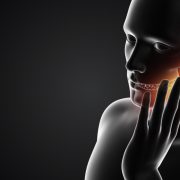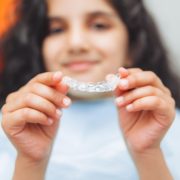What Is Your Temporomandibular Joint?
The temporomandibular joint is the “hinge” that attaches your jawbone to your skull. You have two temporomandibular joints, one located on either side of your face. They allow you to open and close your mouth for speaking, chewing, yawning, and more. When something goes wrong with your TMJ, this is called TMJ disorder, or TMD. This is often a painful or uncomfortable condition that requires treatment from your orthodontist in Solon, OH.
About Temporomandibular Joint Disorder
You probably know someone who has experienced TMD because it’s fairly common and may have many causes, including:
- Trauma to the face or jaw
- Chronic conditions such as arthritis
- Long-term teeth grinding or clenching
- Disc erosion
- Connective-tissue diseases
TMD may be very painful with symptoms such as jaw tenderness, ear ache, or an inability to open and close your jaw. Pain may radiate throughout your face, making it difficult to pin down the exact source. Fortunately, your orthodontist can easily diagnose and treat TMD.
How to Manage TMD
If you’ve been diagnosed with mild TMD, your orthodontist may have specific instructions to help you manage it, including:
- Applying hot or cold compresses to painful areas
- Performing simple jaw exercises
- Ceasing bad habits, such as nail-biting or resting your jaw in your hand
- Avoiding wide-mouth movements, such as yawning or singing
- Practicing relaxation techniques, such as meditation or yoga
More serious instances of TMD may require treatment with medications such as pain relievers or muscle relaxers. Wearing an occlusal appliance, such as a mouth guard, may be helpful as well. In some instances, physical therapy or surgery may be required to improve the symptoms of TMD.
Help for Temporomandibular Joint Pain in Solon, OH
For help with TMJ disorder in Solon, OH, call McGuire Orthodontics and Facial Orthopedics to schedule a consultation today.







